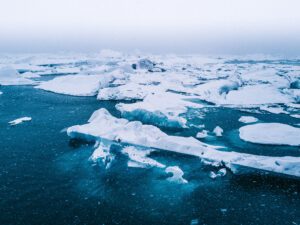The Glaciers in Danger: Demystifying Ice Melt and Climate Change
Glaciers in peril: Climate warming and consequences for our world
Within the remarkable phenomenon of ice melting, the rapid erosion of Arctic, Antarctic and mountain glaciers around the world has been noted in the last decades. This evolution is intrinsically associated with climate warming.
Greenhouse gas emissions lead to an increase in temperatures, resulting in an early melting of the ice, coupled with increasing difficulty for the latter to regenerate during the winter season.
A colossal volume of more than 28 trillion tonnes of ice has already disappeared in just over two decades. The consequences of this melting are multiple, ranging from the destruction of habitat for many animal species and local communities to the modification of ocean currents. In addition, the rise in sea levels increases the risk of flooding in various regions of the globe.
The commitment made at the COP21 in 2015, mainly aiming to limit climate disruption to less than 1.5°C, represents one of the essential means of fighting this alarming phenomenon of ice melting.
Decoder: Understanding the urgency and our actions to counter it
The constant dependence of humanity on nature for health, food and general well-being is putting increasing pressure on the environment, often far beyond its limits. As the fight against plastic pollution and deforestation continues, another major climate issue is manifesting at the opposite end of the globe: the relentless melting of ice.
Ice melting is, in some ways, the ultimate embodiment of climate change. It is a matter that deserves our attention to understand its implications and act to slow it down. This writing will focus on current knowledge regarding the melting of ice and ongoing initiatives to preserve as much of it as possible.
Alert at the Poles: The Accelerated Melting of Ice
The ice, both in the north and south, at sea or on land, is melting at an alarming rate, a trend confirmed by researchers using satellite data collected since 1995.
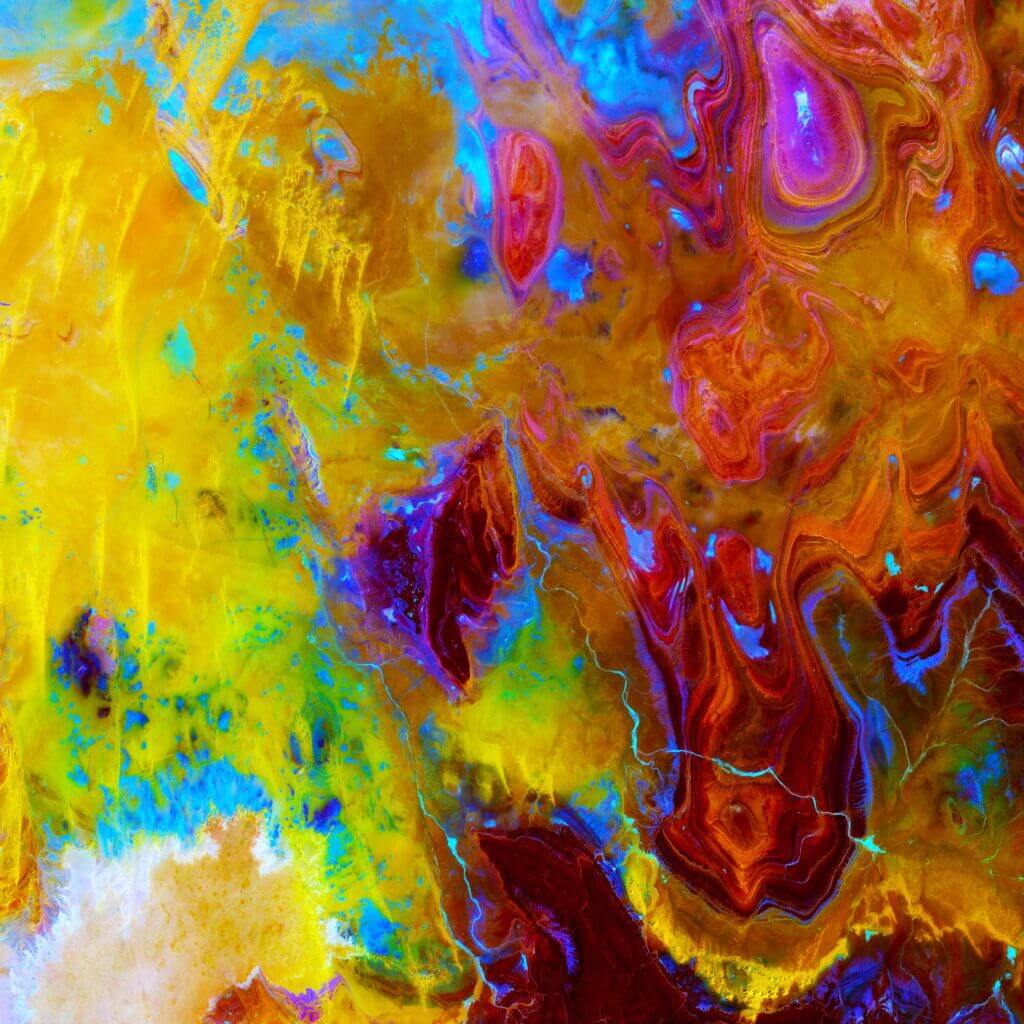
Researchers from the University of Leeds, in the UK, have made a first by using satellite data to study global ice melt. Their research covers 215,000 mountain glaciers, ice caps, the ice shelves surrounding Antarctica and sea ice. The results of their study are far from comforting. Between 1995 and 2017, the Earth lost 28 trillion tonnes of ice or 28 x 1015 tonnes. The rate of this melt has accelerated considerably, from 0.8 trillion tonnes per year in the 1990s to 1.3 trillion in 2017.
The fastest melting zones are the Greenland and Antarctic ice caps. “In these regions, we are following the worst-case scenario of climate change defined by the Intergovernmental Panel on Climate Change (IPCC),” said Thomas Slater, lead author of the study, in a statement from the University of Leeds.
Glaciers in peril: Understanding their role in the face of climate change
The term “melting of ice” refers to the rapid acceleration of the disappearance of glaciers, a phenomenon observed mainly since the beginning of the industrial era. This acceleration is not a natural event but is rather the consequence of human activity, which causes the warming of the Earth’s surface.
Due to climate change, ice is now melting three times faster than before and struggling to regenerate during the winter. Research indicates that an impressive total of over 28,000 tonnes of ice has disappeared since 1994. Even more concerning is the fact that the rate of ice melting has increased by 65% in 30 years, from 800 billion tonnes per year in the 1990s to 1,300 billion in 2017.
In short, talking about ice melting is akin to describing a vicious cycle: human industrial activity generates significant greenhouse gas emissions, which warm the planet. This warming causes ice to melt, releasing methane formerly trapped in permafrost. Meanwhile, melting ice warms the oceans, contributing to an increase in greenhouse gases.
The critical role of glaciers in climate regulation
Ice plays a crucial role as a climate regulator. It has the ability to reflect 80% of direct sunlight back into space. However, when ice melts, it exposes the surface of the oceans, which, in turn, absorb 90% of the sunlight and 25% of the CO2.
The melting of ice also triggers the emission of methane into the atmosphere, which further exacerbates climate change. It is thus a vicious circle where the melting of ice exposes darker surfaces which absorb more heat, thus accelerating climate warming, which in turn further promotes the melting of ice.
The Alarming Thaw: A Look at the Arctic and Antarctic
The Arctic meltdown: rapid ice melt
The Arctic, located at the North Pole, is an ocean surrounded by land, which serves as a habitat for the polar bear. The region plays a fundamental role as a climate moderator, facilitating the circulation of ocean currents that move warm and cold waters across the globe.
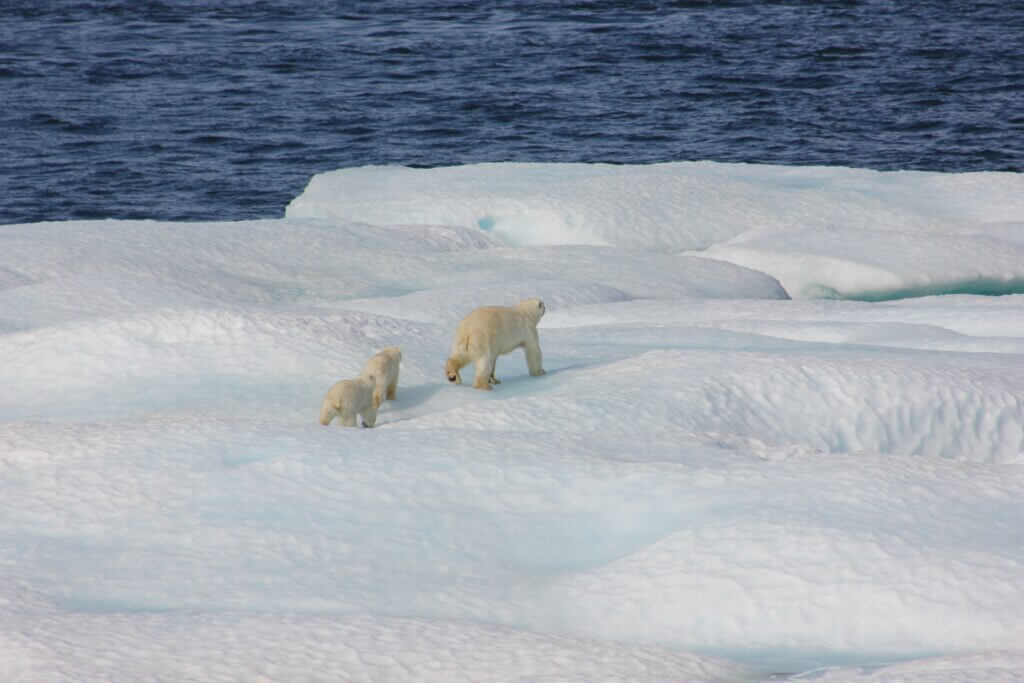
Typically, the Arctic ice sheet extends across the entire ocean and adjacent seas in winter before shrinking and retracting in spring. However, this natural cycle is threatened by climate change, which reduces the surface area of the ice in winter and faster melting in spring.
During the 2007-2020 period, Arctic ice levels reached their lowest ever recorded in the 42 years of satellite recording history. The melting season is starting earlier than expected, and 13% of the ice is lost each decade. According to the Intergovernmental Panel on Climate Change (IPCC), the Arctic ice is warming up twice as fast as the rest of the world. At this rate, it could almost disappear some summers from 2050 onwards.
Further north, the Greenland ice cap, the second largest mass of ice after Antarctica, is at a point of no return. In 2019, it lost 532 billion tonnes of ice, which is equivalent to the disappearance of six Olympic-sized ice pools every second.
The Antarctic on Alert: The Devastating Impact of Climate Change
Located at the South Pole, Antarctica is a continent surrounded by oceans, where the ice is generally thinner. It is the home of penguins. Antarctica is essential for the planet as it holds 90% of the Earth’s ice and 70% of the world’s frozen freshwater reserves.
According to the World Meteorological Organisation, the west coast of the Antarctic Peninsula has been one of the regions of the globe that has warmed the most over the last 50 years, with temperatures increasing by 3°C. Furthermore, for the first time, temperatures approaching 20°C have been recorded in the region in recent years. During the 1980s, Antarctica was losing around 40 billion tonnes of ice per year, a figure that has risen to 252 billion tonnes per year between 2009 and 2017.
This warming is not limited to land but also affects the oceans, whose temperature has increased by 1°C since 1995. It has been shown that the Antarctic polar current is warming faster than the rest of the ocean, testifying to the urgency of the problem.
Anthropogenic and Natural Factors Accelerating Ice Melt
Effect of industries and transport on accelerating ice melt
Through industry and transport, the emission of greenhouse gases has reached record levels in recent years. These gases tend to concentrate at the poles of the planet, and the melting of ice releases methane, a gas that contributes to the greenhouse effect.
As the amount of ice decreases, its ability to reflect sunlight decreases proportionally, leading to increased warming of the oceans. This phenomenon contributes to the warming of the ice in contact with these increasingly warm waters. Thus, Arctic waters have seen a temperature increase of 2.5 degrees since 1970, which further accelerates the melting of the ice.
Impact of Oil and gas Extraction on ice melting
Oil and gas extraction operations are also a major source of methane emissions, the main component of natural gas. Methane is particularly damaging to the environment, surpassing even carbon dioxide in terms of its impact on global warming.
Whilst carbon dioxide is generally considered the main greenhouse gas, methane has a 25 times greater global warming potential. This means that, even in lesser quantities, methane has a disproportionate effect on the planet’s warming, contributing to the acceleration of ice melting. It is, therefore, essential to consider the impact of oil and gas extraction on the release of methane when discussing the causes of ice melting.
Role of Deforestation in Accelerating Ice Melt
Deforestation significantly contributes to the melting of glaciers by reducing the number of trees capable of regulating temperatures. This practice loses thousands of these natural temperature regulators each year. Industries often resort to slash-and-burn agriculture, a method that involves clearing land by fire, generating huge fires whose toxic fumes reinforce the greenhouse effect.
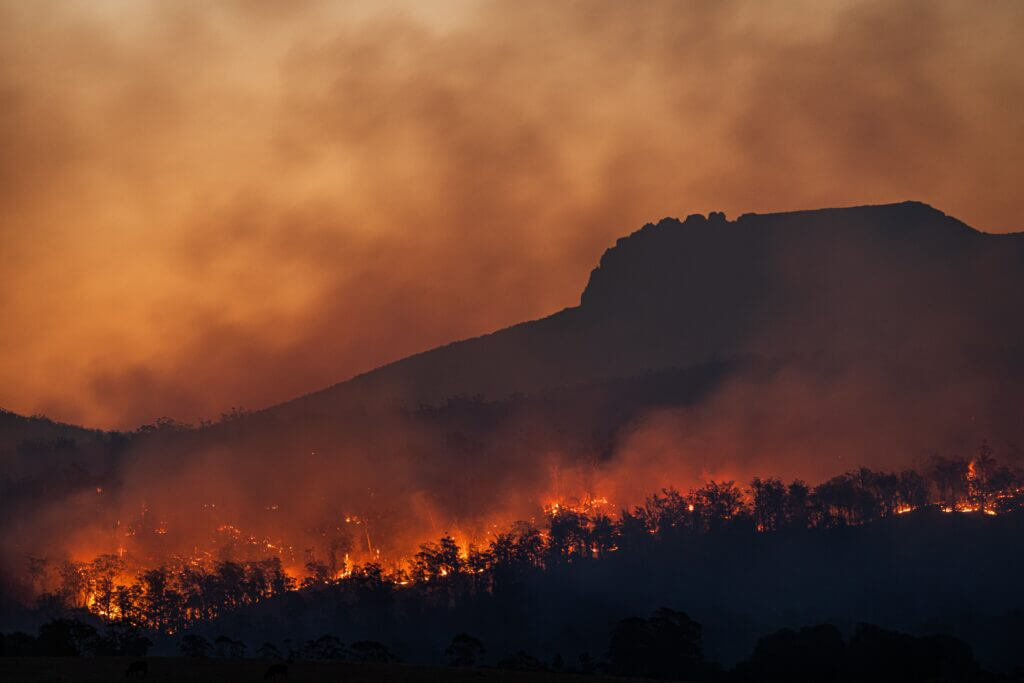
These fires lead to the warming of the atmosphere and make the air drier, which promotes forest fires. These in turn contribute to climate change. For example, in Tanzania, deforestation has led to a drying up around Kilimanjaro, significantly reducing the snowfall. As a result, the glaciers in the region are retreating, and according to some estimates, they could have completely disappeared by 2030.
Impact of Icebreakers on the Increase of Arctic Ice Melt
During the summer months, icebreakers navigate towards the north of the Arctic Ocean. Their passage leaves behind trails of open water, which do not reflect the sun’s rays as efficiently as ice, thus contributing to the warming of these areas.
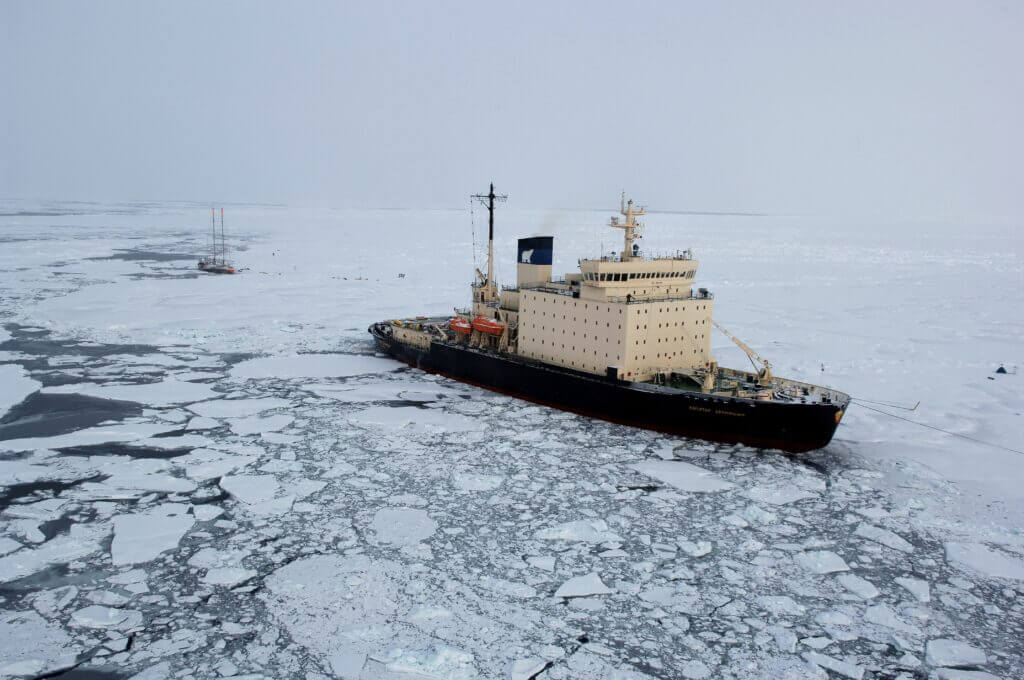
Furthermore, recent years have been characterised by unusual anticyclonic conditions that have dispersed the clouds, allowing for greater sun penetration and hindering snow formation. More than half of the ice loss in Greenland in 2019 is attributable to this phenomenon. These conditions, combined with the impact of icebreaker ships, exacerbate the melting of ice in the Arctic Ocean.
The Melting of Ice: A Panoramic View of Environmental and Human Impacts
The melting of ice is, therefore, a direct consequence of climate change, accelerated by human activity. The consequences are multiple and already tangible:
Climate threats: Impact of melting ice on vulnerable populations
The melting of ice is causing a rise in water levels which could flood certain regions, thus causing the displacement of millions of people following natural disasters. This is a phenomenon already observed in certain parts of the world, such as the Maghreb in Africa and Bangladesh in Asia.
In these regions, the consequences of climate change are alarmingly manifesting. Water scarcity, desertification and famine are just some of the challenges these populations have to face. This situation highlights the crucial importance of fighting against the melting of glaciers, not only to preserve the natural environment but also to protect the most vulnerable populations against these climate upheavals.
Deregulation of permafrost: A catalyst for climate warming
The permafrost, a layer of soil that remains frozen permanently in the northeast hemisphere, acts as a barrier holding carbon in the form of decomposing plants and animals under the ice. However, with climate change, this layer of soil is beginning to melt.
The thawing of permafrost leads to the release of methane, carbon dioxide and bacteria into the atmosphere. This release of greenhouse gases further reinforces climate warming, which in turn accelerates the melting of ice. This phenomenon triggers a vicious circle of warming and melting, exacerbating the impact of climate change.
Dramatic consequences of the rise in sea levels due to melting ice
One of the major impacts of melting ice is the rise in sea level, which is potentially responsible for future flooding and the submergence of many cities. The 20th century saw the sea level rise by about 1.4 millimetres per year, a rate which has since doubled to reach 3.6 millimetres per year today. With a rise of just a few tens of centimetres, iconic cities like New York, Tokyo, Shanghai, or even entire regions like Florida, could find themselves underwater.
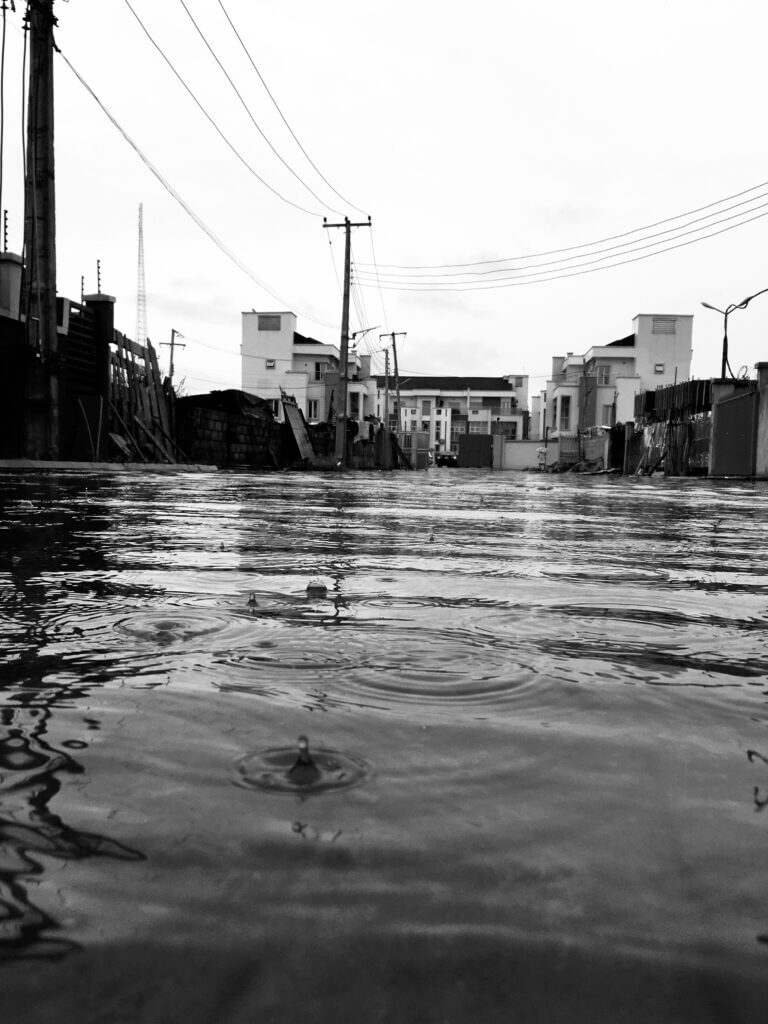
In the most extreme scenarios, a total melting of the ice in Greenland and Antarctica could cause a rise in sea level of around 70 metres. This rise could make many regions of the world uninhabitable and cause the submergence of coastal cities like New York, Tokyo and Shanghai. By the end of the century, a rise in sea level of just 17 centimetres could already affect nearly 400 million people.
This phenomenon of sea level rise is, however multifaceted. In addition to ice melting, global warming leads to an increase in the volume of the seas, a process called thermal expansion. Furthermore, the seas and oceans are becoming increasingly acidic and losing their oxygen content, leading to the spread of dead zones with catastrophic consequences for fishing and marine ecosystems, such as corals.
If a complete disappearance of the ice, which covers over five million cubic kilometres on the planet, could take around 5000 years, changes to coastlines and contours of inland seas could occur much sooner.
In the current context of rising waters, considerable transformations are expected for all continents: North America would lose its Atlantic coast and Florida; in South America, the Amazon basin and the Paraguay River basin would open up to the Atlantic; Africa would be relatively preserved, with the exception of Egypt; in Europe, London, Venice, the Netherlands and a large part of Denmark would be submerged; in Asia, China, Japan, Bangladesh and coastal India would be flooded; and in Australia, the continent, mostly desert, would lose a large part of its coastal strip where currently four out of five Australians live.
Effects of Ice Melting on Marine Current Dynamics
The melting of ice, warming the waters and mixing large amounts of fresh water with salt water cause a change in the ocean currents. These currents, warm on the surface and cold at depth, traverse the entire globe. They play a crucial role in transporting nutrients and regulating the climate, redistributing solar energy evenly. For example, the Gulf Stream brings the heat from the tropics to Europe, allowing for a mild climate there.
The rise in temperatures alters the role of currents, such as the AMOC (Atlantic Meridional Overturning Circulation). This allows warm water to move northwards, then takes cold water down deep towards the south.
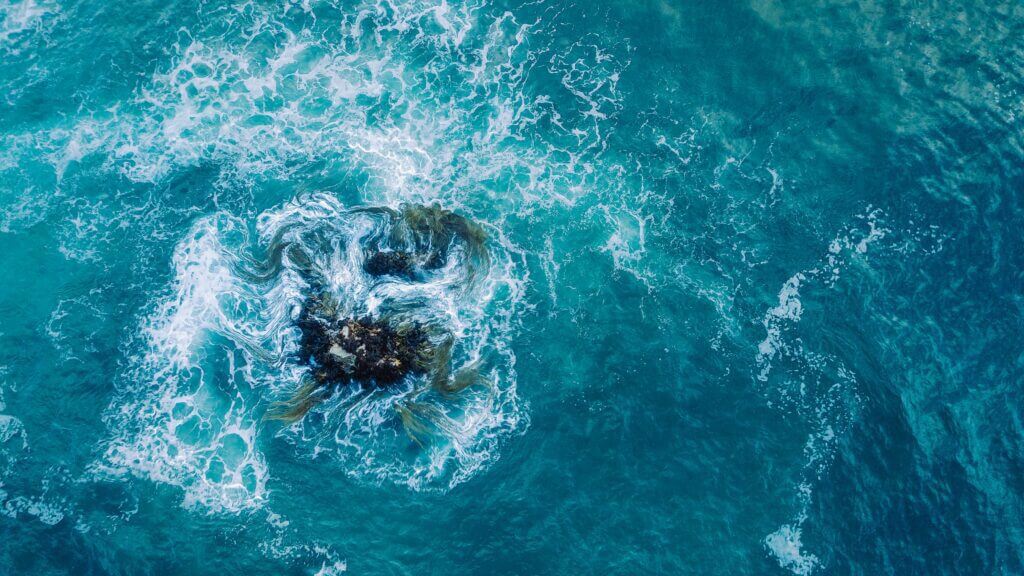
The slowing of deep ocean currents, caused by the melting of Antarctic ice, is happening earlier than expected. According to a new study, this phenomenon is occurring decades earlier than expected, putting marine life at risk and potentially accelerating climate change.
For a long time, scientists have warned that an acceleration of Antarctic ice melting and rising temperatures caused by human-made greenhouse gas emissions should have a notable effect on the global network of ocean currents, which transport nutrients, oxygen and carbon.
A previous study, based on computer models, had suggested that water circulation in the deepest parts of the oceans would slow by 40% by 2050 if emissions remained high. However, a more recent study published in Nature Climate Change, mainly based on observational data collected by hundreds of scientists over decades, indicates that this process has already slowed by 30% between the 1990s and 2010.
Kathryn Gunn, from the Australian scientific agency CSIRO and the British University of Southampton, the main author of the study, highlighted that these data show that the impacts of climate change are further advanced than expected. This acceleration is worrying, but the timing is even more so, she highlighted.
Global climate repercussions of melting ice
The melting of the ice also has important consequences on the climate on a global scale. We are already seeing a weakening of ocean currents which translates into significant climatic changes. We can expect higher temperatures in Central America and lower temperatures in Western Europe. Furthermore, marine heat waves could become more devastating for ecosystems. Winters would become more extreme and natural disasters more frequent.
These climate changes are already forcing many people to flee their lands, particularly in Asia and the Pacific Islands. It is estimated that by 2050, our world could be populated by 140 million climate refugees.
In parallel, the weather conditions are becoming increasingly uncertain and extreme. Heavy rains, droughts, fires, and tornadoes are now common phenomena. As proof, 2021 has been particularly marked by serious climate events: fires in Greece, Turkey and California, heavy rains and floods in China and Belgium, to name but a few. These events highlight the urgency of the situation and the need to act to combat the melting of the ice and global warming.
Impacts of Ice Melting on Wildlife and Ecosystems
The acceleration of ice melting has devastating consequences for wildlife. This phenomenon threatens many species, upsets natural cycles, and gradually disappears certain habitats. For example, in Antarctica, the penguin population is at risk of having no place to live, replaced by colonization of plants as the climate warms.
Closer to our lands, the ice floe is thinning, reducing the vital space for the local fauna. Already, we observe an increased verdure in the Arctic regions, pushing many species to migrate to new territories. This forced migration leads to increased competition between the local species and the newcomers, including human beings. The polar bear, for example, sees its hunting ground reduced each year, leading to a significant decrease in its population. This situation puts other species at risk, such as the ivory gull, whose diet is closely linked to that of this ursid.
If this trend continues, Emperor penguin colonies could lose up to 93% of their numbers by the end of the century due to the fragmentation of the ice. This phenomenon also affects the indigenous populations who depend on the ice for their movements, hunting and mooring of their boats. For example, in recent years, the too-thin ice around the Bering Sea between Russia and Alaska has regularly prevented the landing of supply planes for the populations.
In the oceans, the rise in water levels disrupts the penetration of sunlight, threatening the photosynthesis process of coral reefs and the survival of fish species that depend on these ecosystems for their food. These transformations highlight the urgent need to take measures to combat the melting of ice and preserve our planet’s biodiversity.
Ice source: Threat to global freshwater reserves
Global warming is hurting the majority of glaciers, including those nestled in the highest altitude valleys. Their rapid melting not only contributes to rising water levels but also to a drastic reduction in the planet’s freshwater reserves. For example, the glaciers of the Himalayas play an essential role for nearly two billion people, providing the water necessary for their consumption, food and energy production. This situation is all the more worrying as hydroelectric power is seen as a major alternative energy source for the future.
It is essential to note that Antarctica holds 70% of the planet’s freshwater reserves. However, with increasing glacial melting, these precious freshwater reserves are diluted in the salty waters of the oceans, significantly reducing global reserves. Thus, the disruption of glaciers caused by climate change is seriously endangering freshwater resources, increasing pressure on an already vital element for the survival of humanity and many species.
Source of Ice: Amplification of the Greenhouse Effect
The greenhouse effect, which is a major driver of ice melting, is likely to worsen further.
The warming and melting of seas, ice and permafrost worldwide are releasing harmful chemicals and carbon dioxide once locked away. Furthermore, some projections estimate that melting these permanently frozen soils could release several hundred gigatonnes of carbon into the atmosphere by 2100.
This makes the situation even more worrying, as the increased release of these greenhouse gases could fuel a self-amplifying cycle of climate warming, where the melting of ice and global warming feed off each other in a potentially destructive loop.
Climate Tipping Points Les Points de Bascule du Climat
Undeniably, solutions to tackle the melting of ice must stem from a concerted global effort and be implemented quickly. The fight against this phenomenon will necessarily be gradual, despite large-scale initiatives. It will take centuries to reverse the trend and stop the loss of ice. Technologies aimed at extracting carbon from the atmosphere are still in their infancy.
Nevertheless, there is still time to preserve around a third of the current glacial mass by the end of the century by investing in more resilient and decarbonised societies. The urgency is undeniable.
Several studies already mention the existence of nine “tipping points” in Antarctica. These are areas of extreme fragility which, once destabilised, may never return to their initial state, even if the factors of climate change were eliminated. This could cause a series of cascading natural events, such as accelerated ice melting and a sudden rise in sea levels.
With an increase in temperatures of 3°C, the level of the oceans could rise by 5 millimetres per year, resulting in a total rise of 1.5 metres around 2300. This is a much more worrying scenario than that envisaged in the 70s, where some climatologists estimated that a rise of 2°C would have little effect on the ice.
Since then, knowledge has evolved, but many data remain unknown. Research is underway to better understand the interactions between ice and the ocean. These efforts require an unprecedented mobilization to consider effective and sustainable solutions.
Act Against Ice Melting: Global Responsibilities and Individual Initiatives
The answer to a global phenomenon like melting ice can be found at the international level. It is imperative that governments and industries take responsibility and implement the recommendations of the IPCC, including keeping the increase in temperatures well below 1.5 to 2°C.
The study of ice melting remains complex due to the scarcity of data collected in isolated and inhospitable regions of the globe. Although forecasts exist, a large degree of uncertainty remains.
To counter this threat, various innovative ideas are under study among researchers, such as the use of snow cannons to stabilise glaciers, the construction of underwater walls to reduce contact between ice and warm waters, or even the pumping of CO2 from surface waters to be released into deeper waters. Despite their potential, these proposals raise questions about their energy impact.
At an individual level, pursuing our personal commitments and adopting environmentally-friendly daily practices can also contribute to the cause. This involves conscious and respectful energy consumption, responsible waste management, sustainable eating, using eco-friendly modes of transport, etc.
Regarding international discussions, the Conferences of the Parties, initiated in 1995, have provided a privileged platform for countries seeking to implement global climate solutions. It was at one of these conferences, in 2015, that 200 countries signed the Paris Climate Agreement, which aims to keep global warming well below 2°C by 2050. These goals have recently been strengthened in light of current forecasts, which suggest a rise in temperatures of around 3°C.
Innovations to Combat Ice Melt: Initiatives and Challenges
Whilst achieving the goals of the Paris Agreement appears increasingly difficult, innovative initiatives are being considered to mitigate the effects of climate change. Among the ideas proposed by researchers, the use of snow cannons is being considered to stabilise glaciers. Projects to build underwater walls are also under study in order to limit the contact between ice and warm waters.
Some even propose to recreate ice blocks from the water coming from melting glaciers, while others are considering pumping the CO2 present in surface waters to release it into deeper waters. These projects, as intriguing as they may be, nevertheless raise important questions, particularly regarding their energy consumption and their impact on biodiversity. These challenges highlight the complexity of the fight against the melting of glaciers and the urgency of coordinated action at the global level.
EU and France Climate Goals: Towards Carbon Neutrality
The fight against melting ice is intrinsically linked to the battle against rising temperatures. The European Union has expressed its ambition to become a global leader in the fight against climate change. In 2014, the EU approved a Climate and Energy Action Plan for the 2021-2030 period. This plan presents several ambitious goals, including a reduction of at least 40% of greenhouse gas emissions by 2030, compared to 1990 levels.
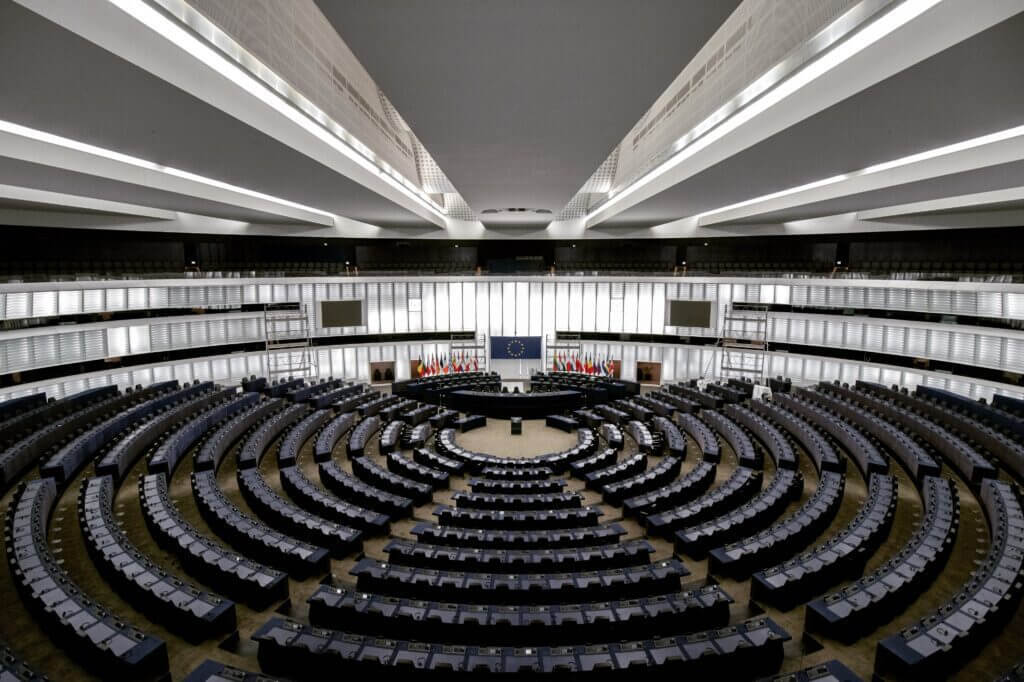
This ambitious plan requires a multi-sectoral approach, including the introduction of stricter emission limits for vehicles, the promotion of eco-friendly modes of transport and the revision of traditional industrial models. Particular attention should also be paid to combating deforestation, which is responsible for around one-fifth of human-caused greenhouse gas emissions. The ultimate goal is to achieve climate neutrality by 2050.
At the national level, France has committed to fighting climate change through the Grenelle de l’Environnement in 2007 and the law relating to the energy transition in 2015. These initiatives aim to reduce greenhouse gas emissions and to encourage the use of renewable energies.
Renewable Energies: Essential Weapon against Ice Melt
In the fight against climate change and melting ice, renewable energy plays a key role. Solar panels, wind turbines, geothermal energy and hydroelectricity, are viable alternatives that are becoming increasingly widespread. These innovative technologies aim to increase dependence on electricity while gradually moving away from the combustion of fossil fuels.
These are these sources of sustainable energy that offer hope of a significant reduction in greenhouse gas emissions, thus helping to slow down the melting of ice and the warming of the planet.
Reforestation: A Green Solution Against Ice Melt
Forests are a vital bulwark against climate change, playing a crucial role in mitigating the melting of ice. However, their degradation and destruction increase the problem, releasing large amounts of carbon dioxide into the atmosphere.
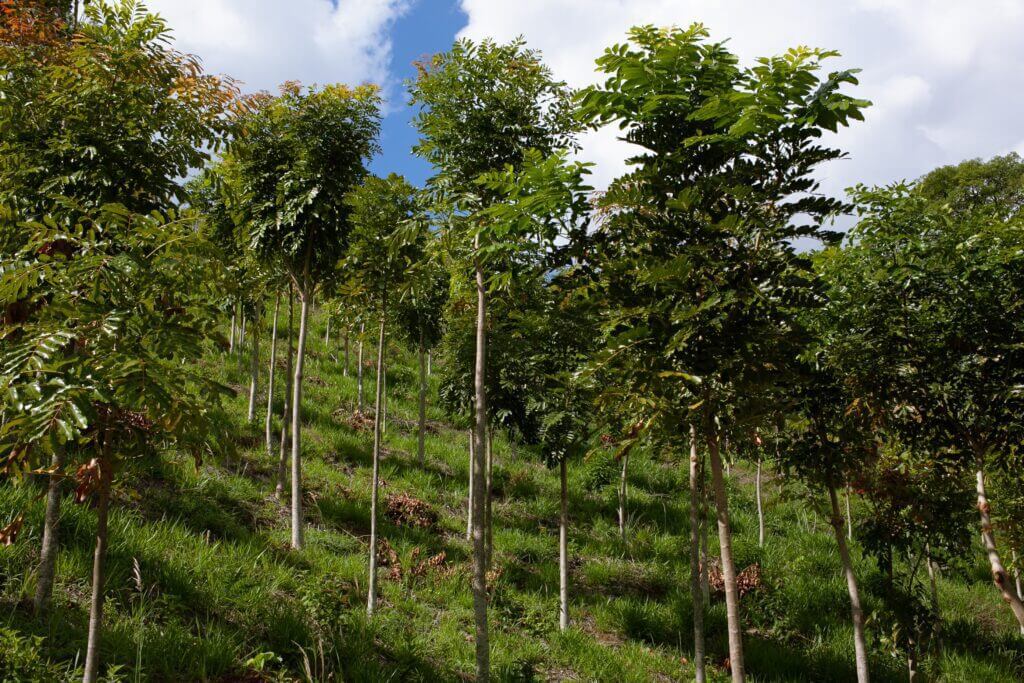
In contrast, the development of new forests could help to balance this rise in carbon dioxide. Indeed, through photosynthesis, forests absorb CO2 and emit oxygen, thus contributing to the reduction of greenhouse gases and stabilising the global climate.

